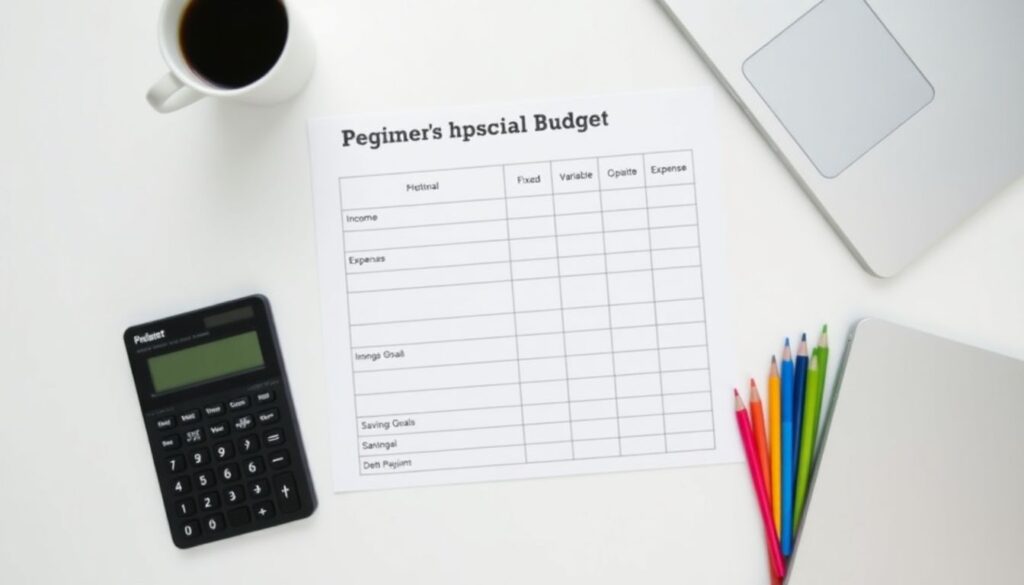First Budget: How to Get It Right from the Start
Creating your first budget is a crucial step toward financial independence. But let’s be honest—most people don’t get it right the first time. Whether you’re fresh out of college, starting your first job, or simply deciding it’s time to take control of your finances, building a solid first budget can feel overwhelming. That’s why understanding the most common mistakes is just as important as learning how to create a first budget in the first place.
In this article, we’ll walk through the key pitfalls beginners make, offer real-world examples, and equip you with practical first budget tips to help you build a plan that actually works.
Mistake #1: Guessing Your Income and Expenses
One of the biggest errors in first budget planning is relying on estimates instead of real numbers. Many beginners assume they know how much they earn and spend, but when they finally track their finances, the results are often surprising.
Real Example:
Anna, a graphic designer in her first full-time job, thought she spent around $200 a month on food. After tracking her expenses with a budgeting app, she discovered she was spending closer to $450. That $250 gap was enough to derail her entire budget plan.
Technical Note:
Always start with your net income—what actually hits your bank account after taxes and deductions. Then, track every expense for at least 30 days before creating your budget. Use tools like Mint, YNAB, or even a simple spreadsheet.
Mistake #2: Forgetting Irregular Expenses
A common blind spot in a first budget for beginners is ignoring non-monthly costs like car maintenance, holiday gifts, or annual subscriptions. These “surprise” expenses aren’t really surprises—they’re just overlooked.
How to Fix It:
1. Look back through the last 6–12 months of bank statements.
2. Identify any expenses that occur quarterly or annually.
3. Divide annual costs by 12 and include them in your monthly budget.
This method is especially helpful when using a first budget template, as many include categories for sinking funds or irregular expenses.
Mistake #3: Being Too Restrictive
It’s tempting to go all-in and cut every non-essential expense—no takeout, no Netflix, no fun. While this may work short-term, it’s rarely sustainable.
Example from Practice:
James, a recent college graduate, tried a “zero-fun” budget to save aggressively for a down payment. Within two months, he burned out and abandoned the budget entirely. A more balanced approach would have kept him on track longer.
First Budget Tips:

– Allocate at least 5–10% of your income for discretionary spending.
– Prioritize joy: budget for things that make life enjoyable, even if they seem small.
– Remember: a budget is a tool, not a punishment.
Mistake #4: Not Adjusting the Budget Over Time
Your first budget is just that—a first draft. Life changes, and your budget should, too.
If you get a raise, move to a new city, or pay off a debt, your budget needs to reflect that. Many beginners assume once the budget is set, it’s done. In reality, regular check-ins are essential.
Pro Tip:
Set a monthly “money date” with yourself to review your spending, adjust categories, and set goals for the next month. This habit is key to long-term financial success.
Mistake #5: Ignoring Financial Goals
Budgeting without a goal is like driving without a destination. Whether it’s building an emergency fund, paying off student loans, or saving for a vacation, your first budget should reflect your priorities.
How to Create a First Budget That Aligns with Goals:
1. Define 1–3 short-term and long-term goals.
2. Assign dollar amounts and timelines to each.
3. Build your budget around those targets.
This approach not only keeps you motivated but also gives your budget a clear purpose.
Quick Recap: Avoid These 5 First Budget Mistakes
1. Guessing instead of tracking real numbers
2. Forgetting irregular expenses
3. Being too strict and unsustainable
4. Failing to update the budget regularly
5. Not aligning your budget with financial goals
Getting Started: Use a First Budget Template

If you’re unsure where to begin, using a first budget template can be a lifesaver. Templates help ensure you don’t overlook key categories and provide a visual structure for your spending.
Look for templates that include:
– Fixed and variable expenses
– Income sources
– Savings goals
– Debt repayment plans
Many free versions are available via Google Sheets, Excel, or budgeting apps.
Final Thoughts
Your first budget doesn’t need to be perfect—it just needs to be honest. Start small, stay flexible, and give yourself grace as you learn. The key is consistency. Each month you stick to your plan, you’re building a habit that will serve you for years to come.
Remember: budgeting isn’t about deprivation—it’s about direction. And now that you know how to create a first budget and avoid the most common pitfalls, you’re well on your way to financial clarity.
Now go take that first step. Your future self will thank you.

